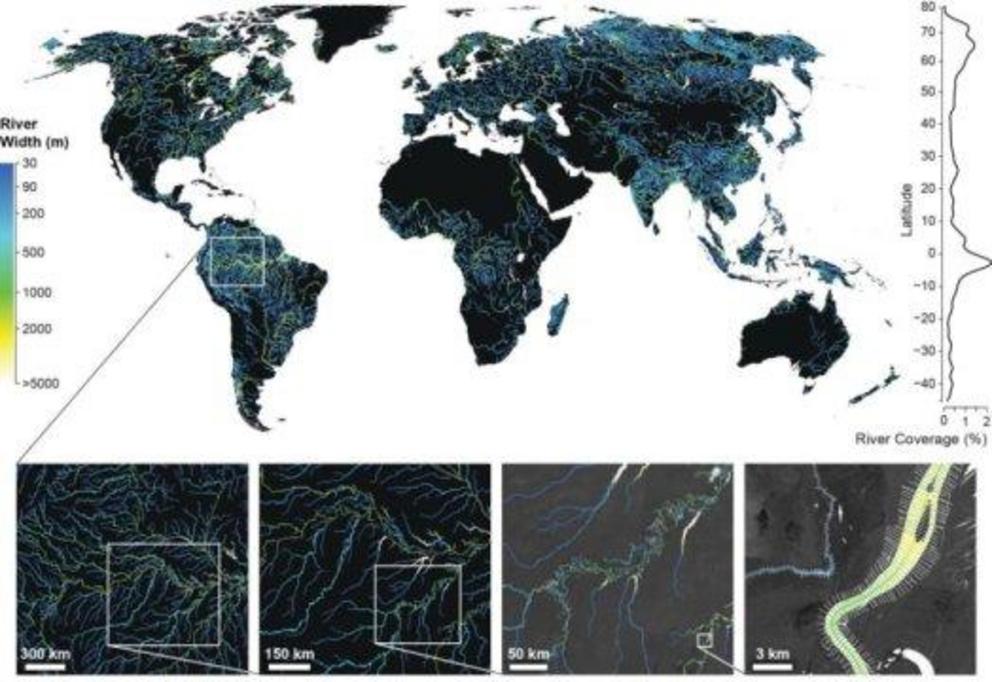Global surface area of rivers and streams is 45 percent higher than previously thought
New data enables better assessment of greenhouse gas movement from water to the atmosphere
Source:
University of North Carolina at Chapel Hill
Summary:
Researchers used satellite images, on-the-ground measurements and a statistical model to determine how much of the earth is covered by rivers and streams. They found that global river and stream surface area is about 45 percent greater than what was indicated by previous studies.
FULL STORY

The Global River Widths from Landsat (GRWL) Database contains over 58M measurements of planform river geometry. Line plot at right shows observed river coverage as a percentage of land area by latitude, and insets show GRWL at increasing spatial scale. Rightmost inset shows GRWL orthogonals over which river width is calculated with only every 8th orthogonal shown for clarity.
Researchers from the University of North Carolina at Chapel Hill and Texas A&M University used satellite images, on-the-ground measurements and a statistical model to determine how much of the earth is covered by rivers and streams. They found that global river and stream surface area is about 45 percent greater than what was indicated by previous studies.
Rivers and streams are a major source of greenhouse gas emissions, so the significantly higher river and stream surface area calculation has important implications for understanding carbon emissions.
The research paper, authored by hydrologists Tamlin Pavelsky of UNC-Chapel Hill and George Allen of Texas A&M University, will be published in the journal Science on June 28.
"As we try to mitigate the effects of climate change, it's really important that we clearly understand where the carbon that we are emitting goes, and that requires us to accurately quantify the global carbon cycle," said Tamlin Pavelsky, senior author and associate professor of global hydrology in the College of Arts and Sciences at UNC-Chapel Hill. "Our new calculation helps scientists better assess how much carbon dioxide is moving from rivers and streams into the atmosphere each year."
This research differed from past studies of global river and stream surface areas that were based on theoretical extrapolations of small amounts of actual data. In this study, the research team was able to directly measure both the smallest streams and world's largest rivers through on-the-ground measurements and satellite images, and then use a statistical model to estimate river and stream coverage across the globe. As part of the study, the researchers built the Global River Widths from Landsat database, which contains almost 60 million measurements of river width worldwide.
NASA will use data from this research to identify river segments during its NASA Surface Water and Ocean Topography (SWOT) satellite mission, which will launch in 2021. The mission will be NASA's first satellite mission specifically focused on measuring rivers and lakes.
The research was supported by grants from NASA.
Journal Reference:
- George H. Allen, Tamlin M. Pavelsky. Global extent of rivers and streams. Science, 2018; eaat0636 DOI: 10.1126/science.aat0636

